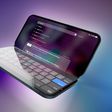After three days of deliberations, the jury reached a unanimous verdict in the Apple vs. Samsung trial. The jury found largely for Apple, ruling that Samsung had willfully infringed on both Apple patents and trade dress for the iPhone -- though notably the jury found in favor of Samsung on questions regarding its tablets. The jury found that Samsung owes Apple $1.05 billion in damages for willfully infringing on Apple's intellectual property.
Apple's stock price rose to an all-time high, more than $675 per share, in after-hours trading following the verdict.
The three-week trial has resulted in interesting testimony and evidence from both sides, including looks at early iPhone and iPad prototypes, Apple and Samsung mobile device sales numbers in the U.S., and an internal Samsung memo that examined what the company needed to change in its Galaxy line of smartphones to compete with the iPhone.
The 9-person jury was asked to fill out a 20-page jury form with more than 700 questions across 33 groups. They were required to come to a unanimous decision on each question and court-watchers didn't expect a verdict until at least next week.

The following is our liveblog as the verdict was written:
The jury was asked to fill out a form covering 33 separate questions regarding patents, trade dress, and antitrust.
On the first claim, regarding the '381 "bounce back" patent, the jury finds Samsung guilty on all counts. Samsung infringed on Apple's patent on a wide variety of products.
On Apple's "pinch and zoom" '915 patent, the jury found that Samsung infringed on all but three products.
For the "double-tap to zoom" '163 patent, the jury found that Samsung infringed on a wide number of products, but not all.
The jury found that Samsung took actions that it knew or should have known were infringing across the '381, '915, and '163 patents on most, though not on all, counts.
For the '677 patent, covering Apple's trade dress registration of the look of the front of the iPhone, the jury found that Samsung did infringe on most devices, but again, not all.
For the D'087 patent, covering Apple's trade dress registration of the look of the back of the iPhone, the jury found that Samsung did infringe on some devices, but not all.
For the '305 patent, covering the trade dress registration of the iPhone's home screen, the jury found that Samsung infringed across most devices.
For the D'889 patent, covering the trade dress registration of the iPad's appearance, the jury found that Samsung's tablets do not infringe -- one of the first victories for Samsung.
On the question of whether Samsung Korea knew or should have known it was inducing US subsidiaries to infringe on the D'677, D'087, D'305 and/or D'889 patents, the jury found in favor of Apple across a wide number of phones and patents, though not on the '889 patent regarding the iPad. These two questions are significant for Apple to receive damages.
On the question of whether Samsung's infringement was willful, the jury again found for Apple on a number of patents and devices.
Finally, the jury ruled that all of Apple's patents are valid.
Regarding trade dress, Apple has proven that its unregistered iPhone 3G trade dress was protectable, and the jury found that a number of Samsung phone models violated Apple's trade dress, though not all of them.
Overall, the jury is finding for Apple on most counts.
Regarding damages, the jury finds that Apple should be awarded $1,051,855,000 in damages for willfully violating Apple's patents and trade dress.
Next up are Samsung's claims against Apple.
The jury has found for Apple regarding its alleged infringement of Samsung's utility patents on every claim, however Apple did not prove they were invalid. The jury did not award Samsung any damages.
Finally, Apple did not prove that Samsung violated antitrust obligations regarding its FRAND patents.
Apple did prove that Samsung is barred from enforcing its '516 and '941 patents.
Update: CNet provides a nice breakdown of patents and the devices found to infringe.
























